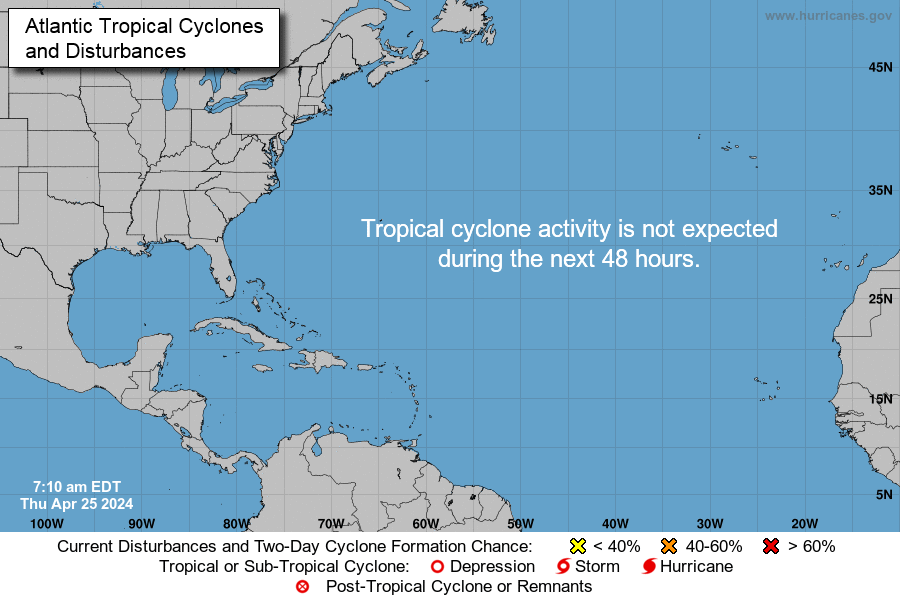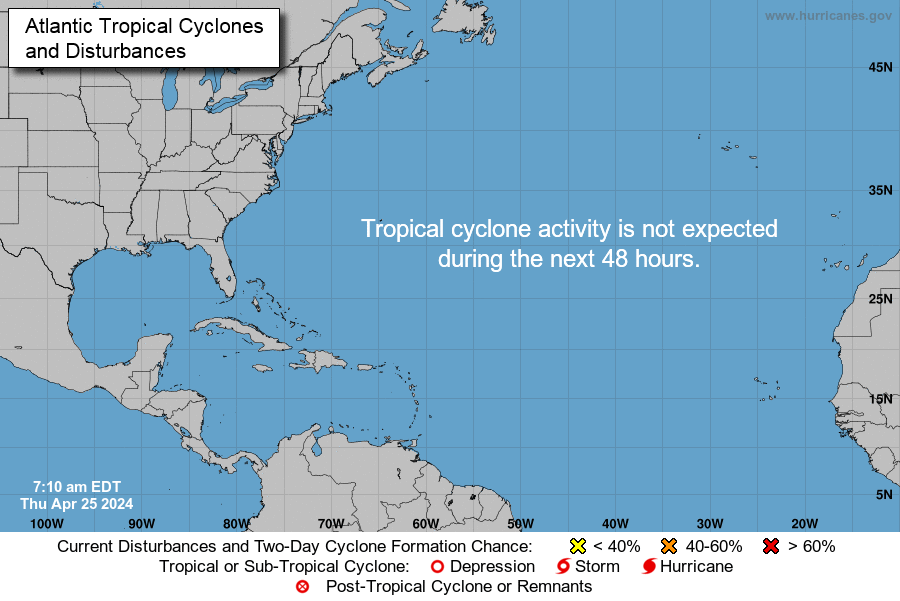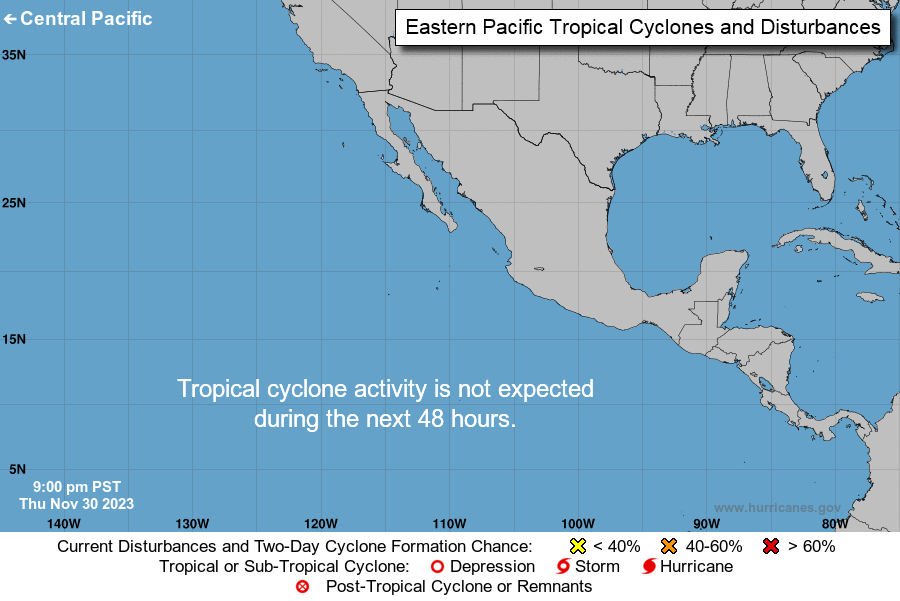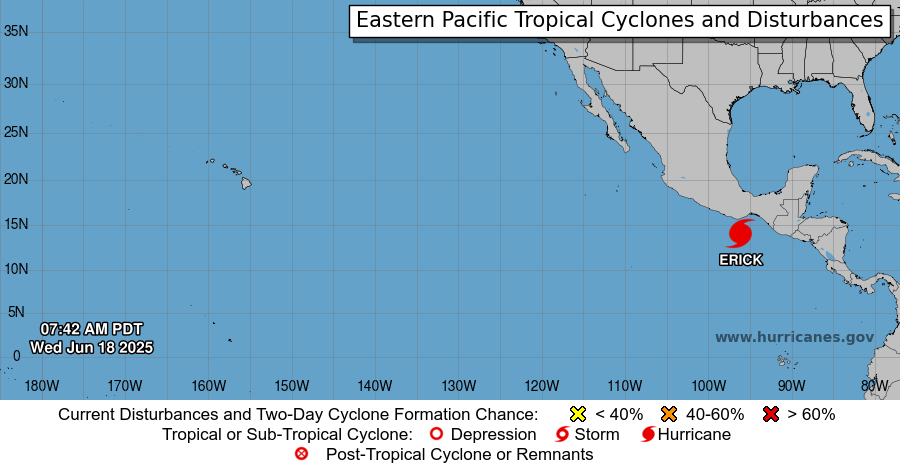Archive for the ‘Tropical storms’ Category
Office of Cyber and Infrastructure Analysis on HARVEY, 8-28-17
Tuesday, August 29th, 2017EXECUTIVE SUMMARY: OCIA TROPICAL STORM HARVEY
PRODUCTS
Prepared By: Office of Cyber and Infrastructure Analysis (OCIA)
STORM CHARACTERISTICS
As of 1100 EDT, 28 August 2017, Tropical Storm Harvey is located in southeastern Texas (TX)
approximately 25 miles east-northeast of Port O’Connor, TX. Maximum sustained wind speed is
40 miles per hour (mph) with higher gusts. Some slow intensification in storm strength is possible
during the next 48 hours. The storm is moving to the southeast at about 5 mph, with a gradual turn
to the northeast and a slow forward speed expected during the day and into the evening of Tuesday,
29 August 2017. The National Weather Service estimates additional rain accumulation of 15 to 25
inches over the upper Texas coast and into southwestern Louisiana through Friday. Isolated storm
totals could reach 50 inches over the upper Texas coast.
https://www.youtube.com/watch?v=yAvnmbbB6iA
PUBLISHED MONDAY, 28 AUGUST 2017
Infrastructure Impact Summary – Update 4
EARLIER REPORTS WERE ISSUED 24 – 27 AUGUST 2017
Impacts to the Transportation Systems Sector have increased because of significant flooding, closing several major
highways and roads. OCIA assesses that local and regional impacts to all critical infrastructure sectors in the
affected area are anticipated to continue. The storm will continue to cause electrical power outages from
combined rain and wind effects. Local impacts are likely to be high for the Energy, Dams, Water and Wastewater
Systems, Transportation Systems, and Commercial Facilities Sectors. National impacts to the Energy Sector may
become apparent as rising flood waters limit the production of gasoline, diesel, and natural gas.
PUBLISHED SUNDAY, 27 AUGUST 2017
Tropical Storm Harvey – Dams – Update 1
AN EARLIER REPORT WAS ISSUED 24 AUGUST 2017
OCIA assesses that the storm will continue to have moderate to high local impacts and low national impacts to the
Dams Sector. The greatest potential cause of impacts to dams is extended periods of heavy inland rainfall. As of
August 27, 2017, the National Weather Service reported 24 inches of rainfall within the last 24 hours in the
NATIONAL PROTECTION AND PROGRAMS DIRECTORATE | OFFICE OF CYBER AND INFRASTRUCTURE ANALYSIS
2
Houston area, with an estimated additional accumulation of 15-25 inches predicted through Friday, September 1,
2017. Flood warnings and watches are in effect with record flooding predicted for the area.
PUBLISHED SATURDAY, 26 AUGUST 2017
Tropical Storm Harvey – Water and Wastewater Systems – Update 1
AN EARLIER REPORT WAS ISSUED 25 AUGUST 2017
OCIA assesses that the storm will have a moderate-to-high impact on the Water and Wastewater Systems Sector
as a result of power losses. OCIA assesses that heavy rainfall and flooding will be the greatest threats to Water
and Wastewater Systems Sector infrastructure. Heavy rainfall and subsequent flooding can affect water and
wastewater systems by inundating electrical components, damaging components via debris flows, or limiting
employee access.
Based on OCIA modeling, there are 19 drinking water treatment facilities—in Texas and Louisiana—serving
populations greater than 40,000 households estimated to be at risk of floodwaters of 3 feet or more. Two
wastewater treatment plants in Texas are also at risk of three feet of flooding and serve large populations.
Tropical Storm Harvey – Impacts of Riverine Flooding on Oil and Natural Gas –
Update 1
AN EARLIER REPORT WAS ISSUED 25 AUGUST 2017
OCIA modeling shows expanded riverine flooding, indicating more oil and natural gas facilities are potentially at
risk. Eight refineries are located in areas that are modeled to receive 8 to 12 feet of flooding. Sixty-two petroleum
or petroleum product facilities (e.g., gasoline, diesel), as well as two natural gas storage facilities, were estimated to
be at risk of receiving over 8 feet of flooding. Additional refineries, natural gas processing and storage facilities and
petroleum, oil, and lubricants facilities may be impacted by floodwaters less than 8 feet, road closures, or
availability of personnel.
Tropical Storm Harvey – Healthcare and Public Health – Update 1
AN EARLIER REPORT WAS ISSUED 25 AUGUST 2017
The potential impacts to the Sector are due to flooding causing extended electric power and water and
wastewater outages. OCIA modeling estimates 9 hospitals and 44 nursing homes could be affected by inland
flooding of 4 feet or more. About 2,372 hospital beds and 3,254 nursing home beds are in the projected affected
facilities. Some of the potentially impacted hospitals have started to discharge patients and reduce clinical functions.
Infrastructure System Overview – Extended Water Outages – Re-release
(originally released 9 March 2015)
Public health issues could arise with regard to drinking water in flooded zones. A Boil Water Advisory has been
issued for Corpus Christi’s 325,000 residents and neighboring cities as a result of power outages impacting city
wastewater treatment facilities; it is likely that more advisories will be issued if there is any change in pressure or
water quality to guard against acute microbial risks. Increased requirements for water supply treatments are also
likely as floodwaters enter wastewater treatment areas. If water treatment mitigation options are not sufficient,
NATIONAL PROTECTION AND PROGRAMS DIRECTORATE | OFFICE OF CYBER AND INFRASTRUCTURE ANALYSIS
3
the public notification would change to “Do Not Drink”, though this rarely happens. How long the advisories will
remain in effect is conditioned upon power restoration and road access to the affected facilities.
PUBLISHED FRIDAY, 25 AUGUST 2017
Hurricane Harvey – Transportation Systems
OCIA assesses that most transportation systems in the affected area will cease operations during the storm and
that recovery efforts may take days to weeks, depending on the level of damage and restoration priorities.
Maritime shipping disruptions may be longer than a typical storm because of the likelihood that the storm makes
landfall and then heads back into the Gulf of Mexico. Freight rail companies will divert trains, localizing any
disruptions to freight shipments. Highways and roads may become impassible due to debris or floodwaters. Storm
surge and floodwaters may also be heavily damaged and wash out roads and bridges, potentially impacting local
traffic for days or weeks following the storm. Flooding on major routes will force traffic onto alternate routes with
less capacity, creating the potential for increased congestion.
Hurricane Harvey – Government Facilities and Emergency Services
Government facilities will be impacted by sustained winds, flooding and related power outages. State and local
governments will likely be able to continue providing essential services. Non-critical facilities will be shut down and
the workforce evacuated until the storm passes.
The Emergency Services Sector is unlikely to experience significant disruptions to operations. Physical
infrastructure may be damaged by flooding, disrupted power, and loss of storage facilities. Police and Sherriff
departments may be forced to evacuate jails and prisons and transfer inmates to backup facilities. Fire
Departments and Emergency Operation Centers will relocate to backup sites as prescribed by continuity of
operations plans while maintaining readiness and response postures.
Hurricane Harvey – Oil and Natural Gas – Update 1
AN EARLIER REPORT WAS ISSUED 24 AUGUST 2017
Oil and natural gas companies have significantly curtailed operations. OCIA assesses that the storm will have
moderate national impact to the Oil and Natural Gas Subsector and high local and regional impacts. The Gulf
Coast is the center of U.S. oil and natural gas operations, accounting for 45 percent of refining capacity. Areas
affected directly by the storm and indirectly by pipeline and barge connections have sufficient product (e.g.,
gasoline, diesel) on hand to withstand a short-term (2 weeks) disruption. Gasoline prices are rising and should
continue to rise over the next week. Petrochemical facilities, which rely on petroleum refineries and natural gas
processing plants for feedstock, may be at risk for short term curtailments. Operations will resume after oil and
natural gas facilities are operational.
Infrastructure System Overview – Extended Electric Outages – Re-release
(originally released 4 August 2014)
Based on the slow moving characteristics of the storm and its projected duration over the impacted area, affected
areas will likely experience prolonged power outages. Power outages may be in excess of 48-96 hours as
restoration efforts will be hindered until high winds and rain subside and flood waters recede. Generally, utilities
cannot restore assets when wind speeds are in excess of 30-35 mph.
Full restoration for a significant, widespread event such as a major hurricane could potentially take weeks for all
customers to be restored. Electric power service is usually restored methodically with high-priority customers
receiving immediate attention, when possible. These high-priority customers include hospitals, water supply
Harvey rapidly intensified Thursday AM in the Gulf of Mexico, and officially became a hurricane at 1 p.m. EDT & is predicted to strengthen further and plow into southeast Texas Friday as the first major hurricane, rated Category 3 or higher on the Saffir-Simpson intensity scale, to strike U.S. soils in 12 years.
Thursday, August 24th, 2017
000
WTNT34 KNHC 241805 CCB
TCPAT4
BULLETIN
Hurricane Harvey Special Advisory Number 17…CORRECTED
NWS National Hurricane Center Miami FL AL092017
100 PM CDT Thu Aug 24 2017
Corrected for extension of Storm Surge Warning
…HARVEY RAPIDLY INTENSIFYING…
…PREPARATIONS ALONG THE MIDDLE TEXAS COAST SHOULD BE RUSHED TO
COMPLETION TODAY…
SUMMARY OF 100 PM CDT…1800 UTC…INFORMATION
———————————————-
LOCATION…24.4N 93.6W
ABOUT 335 MI…540 KM SE OF CORPUS CHRISTI TEXAS
ABOUT 325 MI…525 KM SSE OF PORT OCONNOR TEXAS
MAXIMUM SUSTAINED WINDS…85 MPH…140 KM/H
PRESENT MOVEMENT…NNW OR 335 DEGREES AT 10 MPH…17 KM/H
MINIMUM CENTRAL PRESSURE…979 MB…28.91 INCHES
WATCHES AND WARNINGS
——————–
CHANGES WITH THIS ADVISORY:
The Storm Surge Warning has been extended northeast of San Luis
Pass to High Island Texas.
SUMMARY OF WATCHES AND WARNINGS IN EFFECT:
A Storm Surge Warning is in effect for…
* Port Mansfield to High Island Texas
A Storm Surge Watch is in effect for…
* South of Port Mansfield Texas to the Mouth of the Rio Grande
A Hurricane Warning is in effect for…
* Port Mansfield to Matagorda Texas
A Tropical Storm Warning is in effect for…
* North of Matagorda to High Island Texas
* South of Port Mansfield Texas to the Mouth of the Rio Grande
A Hurricane Watch is in effect for…
* South of Port Mansfield Texas to the Mouth of the Rio Grande
A Tropical Storm Watch is in effect for…
* South of the Mouth of the Rio Grande to Boca de Catan Mexico
A Storm Surge Warning means there is a danger of life-threatening
inundation, from rising water moving inland from the coastline,
during the next 36 hours in the indicated locations. For a
depiction of areas at risk, please see the National Weather
Service Storm Surge Watch/Warning Graphic, available at
hurricanes.gov. This is a life-threatening situation. Persons
located within these areas should take all necessary actions to
protect life and property from rising water and the potential for
other dangerous conditions. Promptly follow evacuation and other
instructions from local officials.
A Hurricane Warning means that hurricane conditions are expected
somewhere within the warning area. A warning is typically issued
36 hours before the anticipated first occurrence of tropical-storm-
force winds, conditions that make outside preparations difficult or
dangerous. Preparations to protect life and property should be
rushed to completion.
A Tropical Storm Warning means that tropical storm conditions are
expected somewhere within the warning area within 36 hours.
A Storm Surge Watch means there is a possibility of life-
threatening inundation, from rising water moving inland from the
coastline, in the indicated locations during the next 48 hours.
A Hurricane Watch means that hurricane conditions are possible
within the watch area.
A Tropical Storm Watch means that tropical storm conditions are
possible within the watch area.
In addition, interests in southwestern Louisiana should continue to
monitor the progress of this system.
For storm information specific to your area in the United States,
including possible inland watches and warnings, please monitor
products issued by your local National Weather Service forecast
office. For storm information specific to your area outside the
United States, please monitor products issued by your national
meteorological service.
DISCUSSION AND 48-HOUR OUTLOOK
——————————
At 100 PM CDT (1800 UTC), the eye of Hurricane Harvey was located
by reconnaissance aircraft near latitude 24.4 North, longitude 93.6
West. Harvey is moving toward the north-northwest near 10 mph (17
km/h). A turn toward the northwest is expected later today, and
Harvey’s forward speed is forecast to slow down during the next
couple of days. On the forecast track, Harvey will approach the
middle Texas coast on Friday and make landfall Friday night or early
Saturday, and then stall near the middle Texas coast through the
weekend.
Data from Air Force Reserve and NOAA Hurricane Hunter aircraft
indicate that maximum sustained winds have increased to near 85 mph
(140 km/h) with higher gusts. Additional rapid strengthening is
forecast, and Harvey is expected to become a major hurricane by
Friday before it reaches the middle Texas coast.
Hurricane-force winds extend outward up to 25 miles (35 km) from the
center, and tropical-storm-force winds extend outward up to 90 miles
(150 km).
Data from the NOAA Hurricane Hunter plane indicate that the minimum
central pressure is 979 mb (28.91 inches).
HAZARDS AFFECTING LAND
———————-
RAINFALL: Harvey is expected to produce total rain accumulations of
12 to 20 inches and isolated maximum amounts of 30 inches over the
middle and upper Texas coast through next Wednesday. During the same
time period Harvey is expected to produce total rain accumulations
of 5 to 12 inches in far south Texas and the Texas Hill Country to
central Louisiana, with accumulations of less than 5 inches
extending into other parts of Texas and the lower Mississippi
Valley. Rainfall from Harvey may cause life-threatening flooding.
STORM SURGE: The combination of a dangerous storm surge and the
tide will cause normally dry areas near the coast to be flooded by
rising waters moving inland from the shoreline. The water is
expected to reach the following heights above ground if the peak
surge occurs at the time of high tide…
N Entrance Padre Island Natl Seashore to Sargent…6 to 12 ft
Sargent to Jamaica Beach…5 to 8 ft
Port Mansfield to N Entrance Padre Island Natl Seashore…5 to 7 ft
Jamaica Beach to High Island…2 to 4 ft
Mouth of the Rio Grande to Port Mansfield…2 to 4 ft
High Island to Morgan City…1 to 3 ft
The deepest water will occur along the immediate coast near and to
the northeast of the landfall location, where the surge will be
accompanied by large and destructive waves. Surge-related flooding
depends on the relative timing of the surge and the tidal cycle, and
can vary greatly over short distances. For information specific to
your area, please see products issued by your local National Weather
Service forecast office.
WIND: Hurricane conditions are likely within the hurricane warning
area late Friday or Friday night, with tropical storm conditions
expected to first reach the coast in the hurricane warning area
Friday.
SURF: Swells generated by Harvey are likely to affect the Texas,
Louisiana, and northeast Mexico coasts by Friday. These swells are
likely to cause life-threatening surf and rip current conditions.
Please consult products from your local weather office.
NEXT ADVISORY
————-
Next complete advisory at 400 PM CDT.
$$
Forecaster Berg
















